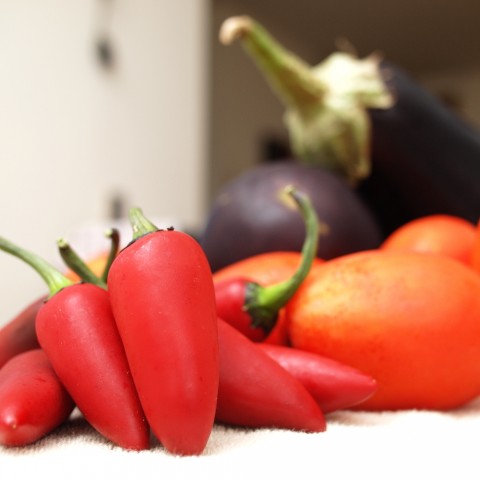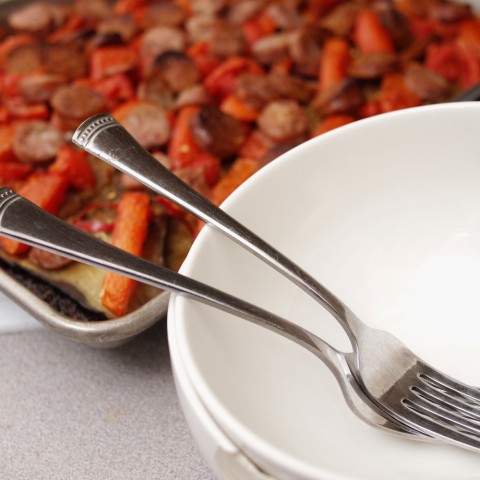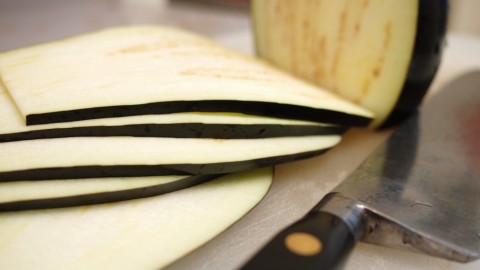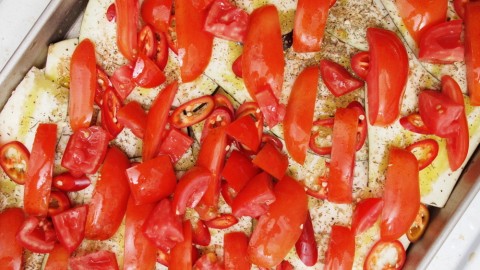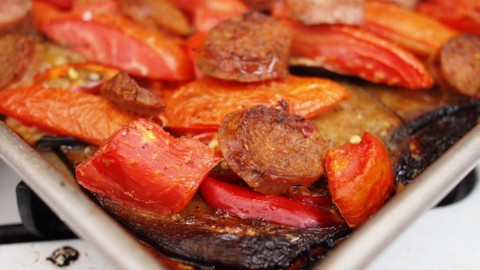I don’t know if this is common knowledge or not for folks without backyard gardens. But tomatoes, peppers, and eggplants are all in the same family. So are potatoes — and belladonna. They’re all nightshades.
What makes this interesting is that all but that last variety — the belladonna — are New World plants.* They didn’t come over to Europe until the fifteenth and sixteenth centuries. And when the Spanish brought them back, it turned out that a large swath of Europe had already learned their lesson about eating the nightshade they knew. And they had a considerable amount of trepidation about these new culinary delights.
I can’t speak directly to eggplants and peppers. But for the Italians, for quite some time, tomatoes were considered table decoration, not food. While among the British, though they knew that tomatoes were eaten by someone somewhere, they were commonly believed to be poison.
The Italians were fairly quick to get over their tomato-phobia, and went, over the course of the 1600s, from zero to marinara. But for the poor Brits, things took a bit longer. The tomato remained in the not food category until the middle of the eighteenth century. And even once it came into fashion on dinner plates, it was treated with typical British culinary finesse (poor things).
My point — well — really — is that I don’t have one. Except to say that the title of this post, roasted nightshades, is not intended to scare you off with visions of deadly plants, seasoned and crisped, prepared specially for your last earthly meal. My sense of humor, I’m told, can be cruel. But if I wanted to kill my readers, I definitely wouldn’t tell you all first!
It so happens that all the vegetables in this particular roasting pan are in fact nightshades. It’s because they’re all ripe at the same time, they’re all prolific in Sarah’s garden, and at our local farmer’s market, and in our CSA. And if I don’t keep on top of cooking them in large batches, I’ve found out the hard way that they multiply in my kitchen, and some end up going to waste.
So the name is about specificity, really. It’s to differentiate this batch of roasted vegetables from all the others, from other families, that I’m sure I’ll get around to posting about here, someday. And it’s about enticing you, not repulsing you.
Come. Eat these nightshades. Love them, don’t shun them. Because they are delicious!
4 Sausage Links (Italian or country are best)
1 Large Eggplant
8 Small Red Peppers (or 4-6 larger ones)
5 Paste Tomatoes
3 Slicing tomatoes
2 tsp Oregano
1 tsp thyme
Olive Oil
Pepper
Salt
Preheat your oven to 400F. Cut the eggplant, longways, into thin slices. Slice the red peppers and the paste tomatoes into strips, and cut the slicing tomatoes into cubes. It is your choice, with the peppers and tomatoes, whether or not to disregard the seeds. I didn’t.
Coat a 13″ x 18″ jelly roll pan generously with olive oil. Then lay the slices of eggplant along the bottom, overlapping them just a little bit and making sure that the entire surface of the pan is covered. Add a drizzle of olive oil to the top of the eggplant, and sprinkle with salt and pepper, and half the oregano and thyme. Spread the tomatoes and peppers evenly over the top of the eggplant, then add a little more salt and pepper, and the remainder of the herbs.
Cut your sausage links into thin slices (or, if you prefer, remove the casings and pinch them into little chunks). Spread them evenly over the top of the vegetables.
Then roast the whole thing for 40 minutes to an hour, until the tomatoes are soft, the sausage is done, and the eggplant has begun to caramelize around the edges of the pan.
This is best served directly from the oven, accompanied by brown rice. But it makes pretty good leftovers, too!
* I am wrong, it turns out, about eggplants. They are native to India and East Asia. However: like the other edible members of the nightshade family, they did not reach Europe until the 1500s.
